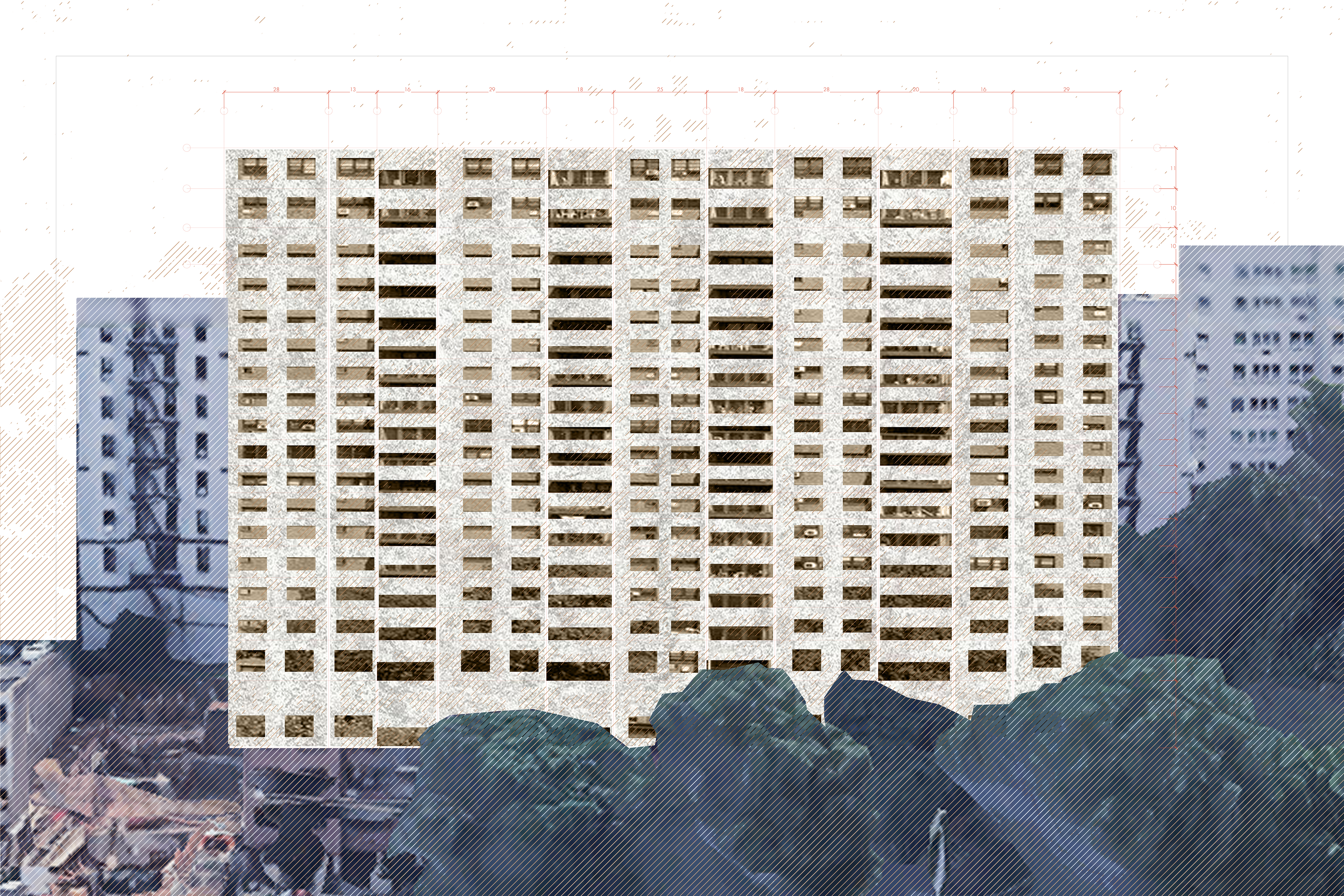In the summer of 1973, then 16-year-old DJ Kool Herc would MC in the recreation room of 1520 Sedgwick upon request by his sister, Cindy, for a back-to-school party. Cindy threw the party because she wanted a new wardrobe for the coming year. No one involved anticipated that this event would be the impetus for 1520 to be coined as the Birthplace of Hip-Hop.



The façade studies above speculate on the transformation of the building to reflect its historical associations. From left to right, the facades are visual reinterpretations of Straight Time, Swing Time, and Dilla Time. Dilla Time refers to the revolutionary percussive cadences of Detroit producer, Jay Dee or J Dilla.
In the early 1970s, the Cross Bronx Expressway displaced thousands of Bronx residents. It became a constant reminder of white flight and redlining in the Bronx. 1520 Sedgwick is located on the Expressway and housed several of those who were displaced by it.
The intervention at Sedgwick speculates on use of Sampling techniques to retaliate on the racist physical infrastructure. Sound, especially volume, is as highly politicized as music. The practice of white flight can be linked to an apparent desire for quiet, associating high sound levels with "undesirable" spaces and people.
The intervention will actively sample the sounds of the highway, recording them, manipulating them, and then playing it back at the road at its resonant frequency. It would effectively destroy the racist infrastructure directly adjacent to what DJ Kool Herc described as "the Bethlehem of hip-hop culture."


